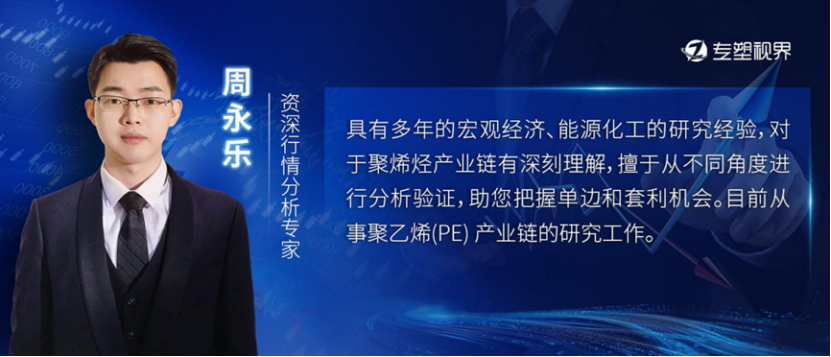Export Rush Failure vs. Supply and Demand Deterioration: Behind October's Surge in Freight Rates, Why Are Plastic Futures Falling to A Yearly Low?
The lively market situation in October saw a 32% weekly increase in freight rates on the West Coast routes, but unlike usual, it did not drive up plastic futures prices. Since October, the main contract price of plastics has continued to be under pressure and decline. This unusual divergence of "rising freight rates and falling futures" breaks the traditional trade logic, and its root lies in the structural reconstruction of multiple market variables.
Why has the rush export effect failed?
In the past, tariff warnings often triggered a "rush to export" trend, but this time it has significantly weakened for three main reasons:
Firstly, policy expectations have dulled. After multiple rounds of tariff negotiations, plastic companies have become "desensitized" to threats from the U.S. A manager from a plastic home goods company in Taizhou, Zhejiang, bluntly stated, "The tariff costs are ultimately borne by U.S. importers, so there is no need to rush to stock up." Additionally, as the U.S. Customs has not yet issued an official enforcement notice, companies are adopting a wait-and-see attitude.
Secondly, the trade structure has been adjusted. Leading companies have already mitigated risks through the "China+N" strategy: Walmart's procurement from China has decreased from 80% to 60%, Wenzhou shoe companies have reduced their export proportion to the U.S. by 40%-50%, and plastic companies have followed suit, significantly reducing their dependence on the U.S.
Thirdly, there is a mismatch in the stocking cycle. Cross-border e-commerce has completed stocking for "Black Friday," and traditional plastic product exporters have also— a certain company in Guangdong has shifted its orders for the U.S. to Southeast Asia, resulting in a sharp decrease in domestic shipments to the U.S. and a short-term absence of increased demand.
Furthermore, the triple negative factors are pressuring the futures market.
The continued slump in plastic futures is essentially due to the weakening fundamentals dominating the pricing logic.
- The support from the cost side has collapsed: The price of crude oil, which is a raw material for plastics, continues to decline, with WTI crude oil falling to a low of $56.63 per barrel, leading to a reduction in oil-based linear costs, and a significant loss on the cost side.
- Supply-side pressure surges: Domestic polyethylene capacity expansion inertia releases, with multiple companies such as Dushanzi Petrochemical and Sinochem Quanzhou restarting facilities. Coupled with the industry's internal competition of "price for volume," petrochemical destocking is slow.
- Demand side peak season failure: The traditional peak season of "Silver Ten" is lacking in substance. After a rapid release of agricultural film stocking, it quickly weakened. The operating rate of PE downstream is at the lowest level in recent years for the same period, and the end market's "buy high, not buy low" mentality exacerbates the negative feedback loop.
Conclusion:
This divergence marks a fundamental shift in the pricing logic of the plastic market: the previous transmission chain of "freight-export-futures" has been replaced by a new framework of "cost-supply and demand-trade structure." Although freight rates on the U.S. route have temporarily surged due to shipping companies suspending services, plastic enterprises have achieved risk hedging through capacity transfer and market diversification. Coupled with the dual impact of falling oil prices and supply surplus, it is naturally difficult for futures prices to show improvement. This also indicates that in the future, the influence of trade policies on commodity futures will increasingly give way to the real supply and demand of the industrial fundamentals.
Author: Zhou Yongle, Senior Market Analysis Expert

【Copyright and Disclaimer】This article is the property of PlastMatch. For business cooperation, media interviews, article reprints, or suggestions, please call the PlastMatch customer service hotline at +86-18030158354 or via email at service@zhuansushijie.com. The information and data provided by PlastMatch are for reference only and do not constitute direct advice for client decision-making. Any decisions made by clients based on such information and data, and all resulting direct or indirect losses and legal consequences, shall be borne by the clients themselves and are unrelated to PlastMatch. Unauthorized reprinting is strictly prohibited.
Most Popular
-

Dow, Wanhua, Huntsman Intensively Raise Prices! Who Controls the Global MDI Prices?
-

Clariant Unveils Cost-Cutting Plan Details, Plans to Shut Down Multiple Plants
-

[Today's Plastics Market] General Materials Weakly Fluctuate, Engineering Materials Steadily Rise
-

Daily Review: Polyethylene Prices Under Weak Consolidation, Sellers Face Significant Pressure to Move Inventory
-

EU Plans to Introduce New Rules Banning 100% Procurement of Chinese Products! Asahi Kasei and Teijin Reach Absorption Merger Agreement






